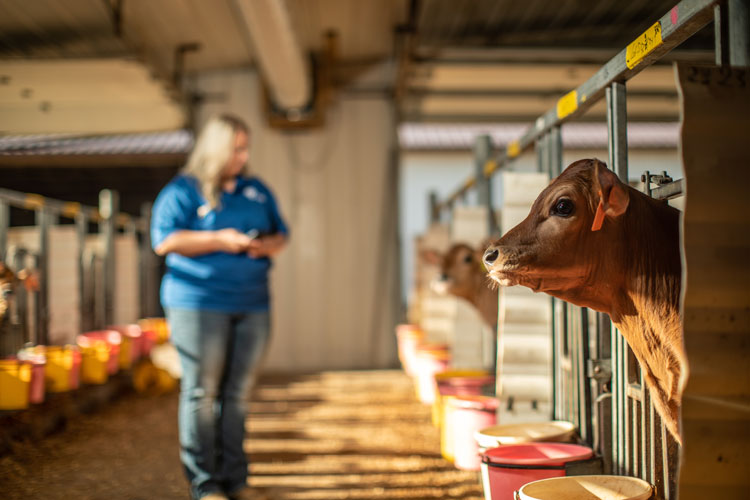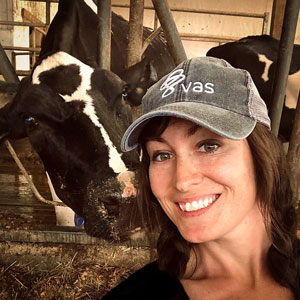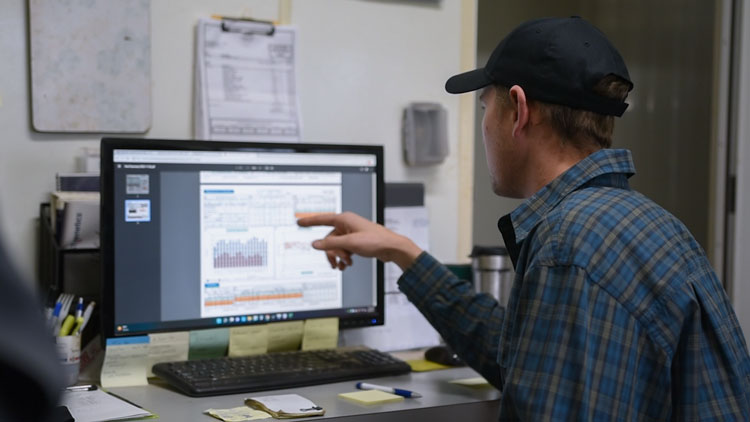The information below has been supplied by dairy marketers and other industry organizations. It has not been edited, verified or endorsed by Hoard’s Dairyman.

No one can predict the future. But, thanks to data management tools, we can reflect on where we’ve been and use industry-leading insights to guide where we want to go. Reviewing your dairy’s data routinely will help you understand your farm’s complete picture.
While analyzing the data, ask questions and reflect on your goals. Are you reaching them? What changes have you made, and how does the data reflect those changes? Are any common challenges highlighted in the data?

“Numbers in a table are great, and looking at a graph can help visualize precisely what is happening on your dairy,” says Taliah Danzinger, senior manager of dairy intelligence at VAS. “Using those graphs to look at data collected over an extended period, 18 months to two years, can highlight seasonal or annual trends.”
Here’s a look at how to get the most from your data to inform your future.
From the past into the future
One way to make an informed decision about the future is to look to the past. Is there a challenge that happens every year on your farm? Do you have a similar issue that occurs every spring?
Data management tools, like HealthVAL and Reproduction Insights in DairyComp, allow you to pull graphs easily for various timeframes to zero in on your herd’s health and reproduction performance. Once you can see the data, catching those seasonal and yearly trends becomes easier.
Then, understanding what caused those trends can help you better predict what may occur in the future and prepare for it. What may have influenced the trend? Have you made any recent changes in management, facilities or protocols? Changes in feed?
“When discussing seasonality and yearly trends, most think of heat stress and its effects. While this is a common example, there are other influences,” says Danzinger. “In many cases, there is a logical explanation that can be solved with changes to management.”
For example, a farm experiences more ketosis events each year around September. During this time, they transition to new crop corn silage in the ration. The dairy can potentially mitigate this issue by being more intentional with silage inventory and carryover.
With the right tools, you can pinpoint trends in your dairy’s data, implement effective management changes and consequently enhance herd health and profitability. This proactive approach allows for better control and mitigation of recurring trends in the future.

Don’t underestimate calf and heifer data
The data you collect on your calves and heifers, like illnesses and management, can help you analyze and anticipate lifetime and production potential.
“We have so much to gain from tracking data on our calves and heifers, and it has never been easier,” says Danzinger. “With mobile cowside technology, or in this case, calfside, we can capture data on the fly and use it for long-term tracking.”
You can use data from birth through the heifer stage in a variety of ways, including:
- Setting goals for how many health events are acceptable for a calf and creating a plan to reach that goal.
- Managing inventory to determine who is best to keep in the herd based on performance data.
- Building a breeding program around the data that influences breeding, including market prices for calves and heifers, culling rate in the herd, and desired age at first calving.
- Assessing first lactation performance to evaluate how calfhood events influence lactation production and potential.
- Prepare for a successful year (and future)
Without interpretation and analysis, data is just numbers. It can only work for us if we work with it. The key? Intentionality. Setting aside time to review your data routinely and make connections is the start of implementing good data stewardship and management practices throughout the year.
“How your data in different management areas of the farm connects tells the story behind the numbers,” says Danzinger. “Without understanding that story, it is difficult to continue your dairy’s success or build and improve upon its challenges.”
The past explains where we have been and where we are today, but it can also inform us of what is to come. Keeping an inventory of your management changes can help you interpret their effect on your dairy’s performance based on trends in the data.
All these things play into the story behind your data, and if you're intentional about reviewing it with your team and connecting the dots, you can set yourself up for a solid future.
“The best way to take advantage of your data is to lean on the people surrounding your dairy, your management team, trusted advisors and data experts, and the tools built to make data management easier,” says Danzinger.
Visit vas.com for more information on how to arm yourself with the right herd management tools and data team to build on your herd’s performance for the future.
VAS is the global market leader in connected farm management systems. For 40 years, VAS has been the operating system of choice for the most innovative dairies. VAS' software and information solutions help collect and connect a farm's data – from herd management to feed performance, tracking and more. These insights are a source of truth, empowering producers and their trusted advisors to make profit-driven and sustainable management decisions. At the forefront of thought leadership within the dairy industry, VAS is trusted by the producers we serve and the greater dairy community.



